Making Inroads
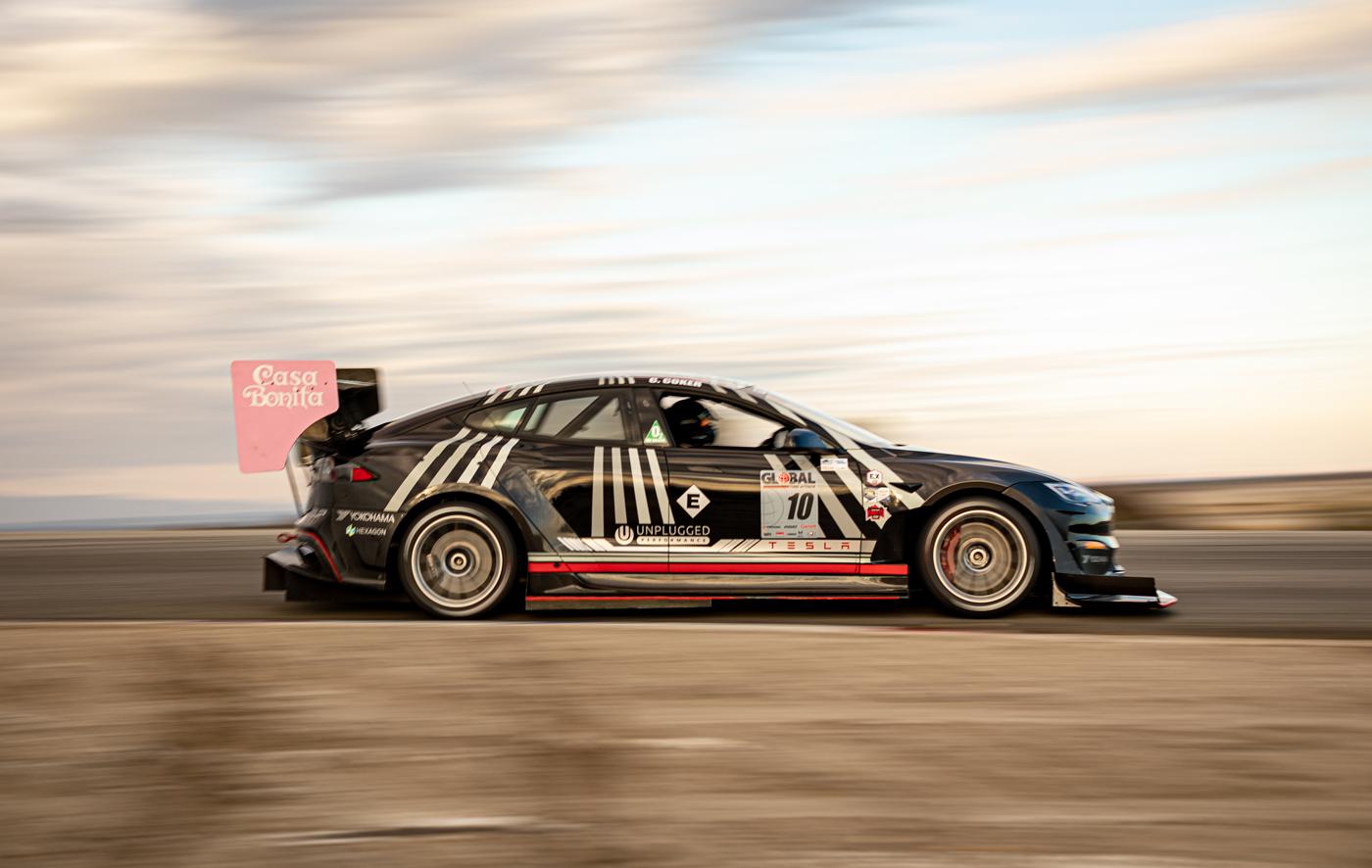
Photo courtesy of Global Time Attack
Autocross and time trial competitions leverage many of the strengths of a burgeoning technology, but EVs also present organizers with a new set of challenges.
While the auto industry continues to ramp up development and production of battery-powered road cars, their embrace in the motorsports realm has been a significantly more gradual affair. Factors ranging from vehicle cost and aftermarket support to fast charger availability and the current limitations of the technology have all attributed to EVs’ measured adoption rate in the racing world, but there’s an increasing number of segments where they’re gaining ground.
Autocross and time trials, in particular, are two segments where EVs have shown significant promise thanks to the disciplines’ formats as well as potential performance advantages that the technology can provide. As more of these vehicles show up to events, sanctioning bodies and organizers are responding in turn to create a place for them within their class structures, establish a level playing field, and ensure the safety of everyone involved.
Sports Car Club of America
“At the national level, I think we’re still in an early adopter phase, but it’s not surprising to us that we’re seeing more people showing up with electric vehicles,” said Heyward Wagner of Sports Car Club of America (SCCA), Topeka, Kansas. “It’s the people who’re often the first to dive into new technologies and ideas. At the regional level, what we’re seeing is that a significant portion of the people who’re coming to us with EVs and electrified vehicles are different types of enthusiasts than we normally get. They’re more in tune with technology in general, and the car itself is the conduit into motorsports interest more so than we’ve traditionally seen.”
In 2021, the SCCA introduced Electric Vehicles Experimental (EVX), a provisional autocross class that, in terms of vehicle preparation, takes much of its inspiration from the Street and Street Touring classes. But the ruleset also takes EV-specific considerations into account.
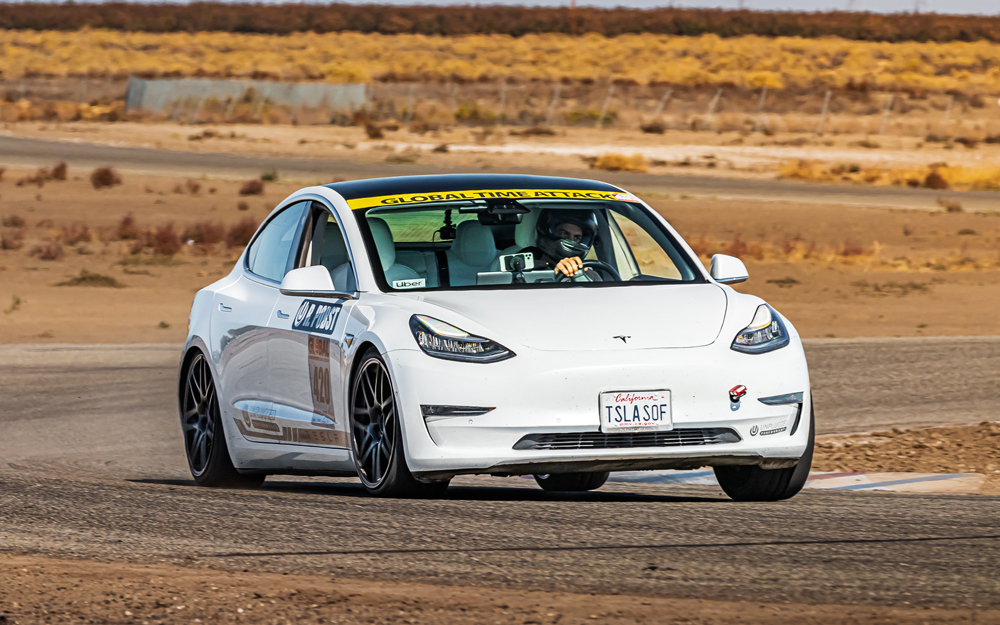
“We have this emerging market of people who’re really into this stuff, and we want to give them a place where they can congregate and run,” Wagner explained. “EVX is a little more open from a rules standpoint so that people can play with the cars a bit, but it’s intended to be something that you can do with a car that you drive on the street every day. The idea is to bring in common aftermarket bolt-ons that are currently available for EVs, things like 200-treadwear tires, control-arm kits, camber kits, and so on. Part of the concept behind EVX was to create a space for these cars while this market matures.”
Wagner said that the SCCA’s long-term goal is to integrate EVs into larger, pre-existing classes where they can compete among other EVs as well as internal combustion-powered vehicles. At this stage in the market’s development, the challenge is less about making the technology competitive and more about developing best practices that satisfy the entire field.
“We’ve classified Tesla Model 3s in B Street and A Street in the past, right alongside internal combustion cars. We’ve done that because that’s a core value to us—we classify cars based on their performance potential, not based upon their drivetrain. The challenge is that these cars are programmable, so the performance might change between the time we classify it to the time it’s being used to compete. But it’s important to us to get this figured out because part of what makes SCCA interesting is having a diverse field of cars competing against one another. To us, that’s kind of the Holy Grail of motorsports.”
He noted that the SCCA’s current approach encourages EV racers to focus on modifications outside of the powertrain. “Because of the weight of the cars, they’re really alignment sensitive—they need a lot of camber to really work well. Suspension is probably the biggest space where we’re seeing aftermarket development right now.”
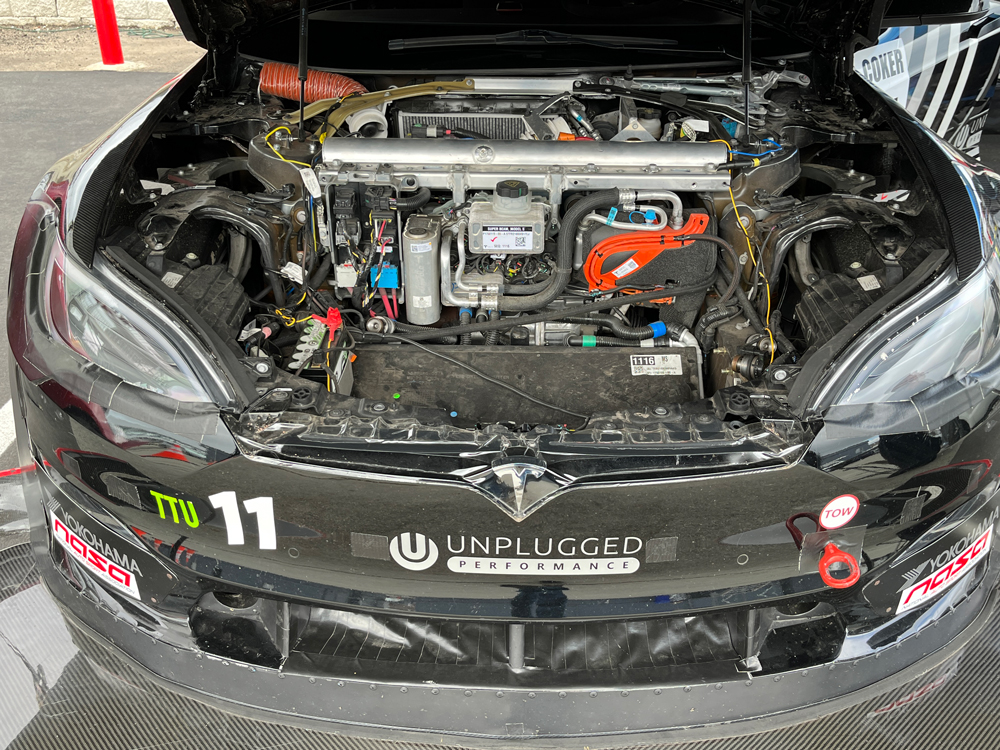
On the time trials side of the equation, the SCCA has been integrating EV entrants into existing classes from the outset, most of which land in the Sport and Tuner categories. “Because we’re still in the infancy of all this, nobody at the amateur level is really building a car to its ‘full potential,’ so most of them end up in those classes. We have seen a few that have gone to the Max category, which allows a broader range of modification, but that’s less common.”
In terms of safety, Wagner pointed out that although the National Highway Traffic Safety Administration data indicate that EVs pose less of a fire risk than internal combustion vehicles, the SCCA has faced some difficulties that originate from outside of the organization. “We’re working closely with the facilities to make sure that we’re in alignment with their expectations, but there are a lot of tracks that are shying away from electrified vehicles right now, so we’re trying to manage that. There’s a lot of concern that, if you have an electric vehicle fire, nothing will put it out. So some tracks are saying that they don’t want electrified vehicles at their track at all because of fire risk, while other tracks are saying that EV drivers need to sign a specific waiver that holds them accountable for any damage the vehicle does to that track. And there are other tracks that don’t have a concern about EVs at all. From my point of view, this is really the most interesting part of the conversation right now because we don’t know enough yet in order to make good policy. There’s a lot of ‘wait and see’ going on right now with the tracks. Nobody wants to be the guinea pig.”
Global Time Attack
The first EV entrants at events for Global Time Attack (GTA) in Torrance, California, began appearing roughly four years ago, and in the time since, the series has seen a steady uptick in these vehicles at events across the country. While most are street-driven examples, GTA series director Jason Dienhart said that they’ve also seen builds that are near the forefront of EV innovation.
“Evasive Motorsports, for instance, built a Tesla to compete at Pikes Peak, which Dai Yoshihara drives. They’ve taken that car to a couple of our Global Time Attack competitions, and they recently brought it out to our Super Late Battle at Circuit of The Americas as well. Since it’s a Pikes Peak build, it fits really well in our Unlimited class in GTA. There’s also Unplugged Performance, which specializes in EV tuning and building EV race cars. They’ve also done a couple of cars that have competed at Pikes Peak, and they brought a car out to the Global Time Attack finals at Buttonwillow Raceway last year. So we’re starting to see really dedicated hill climb builds that also effectively translate to what we do.”
He told us that Global Time Attack approaches classing EVs like it would with any other car. “They’re integrated into existing classes because we take a pretty traditional approach to time attack. The big thing with us is that there are no horsepower limits in any of the classes. To generalize things, the way that we classify cars is largely based on the stickiness and width of your tires, how much aero you’ve added to the car, and how much you’ve taken out of the car in terms of the interior and other weight reduction efforts.”
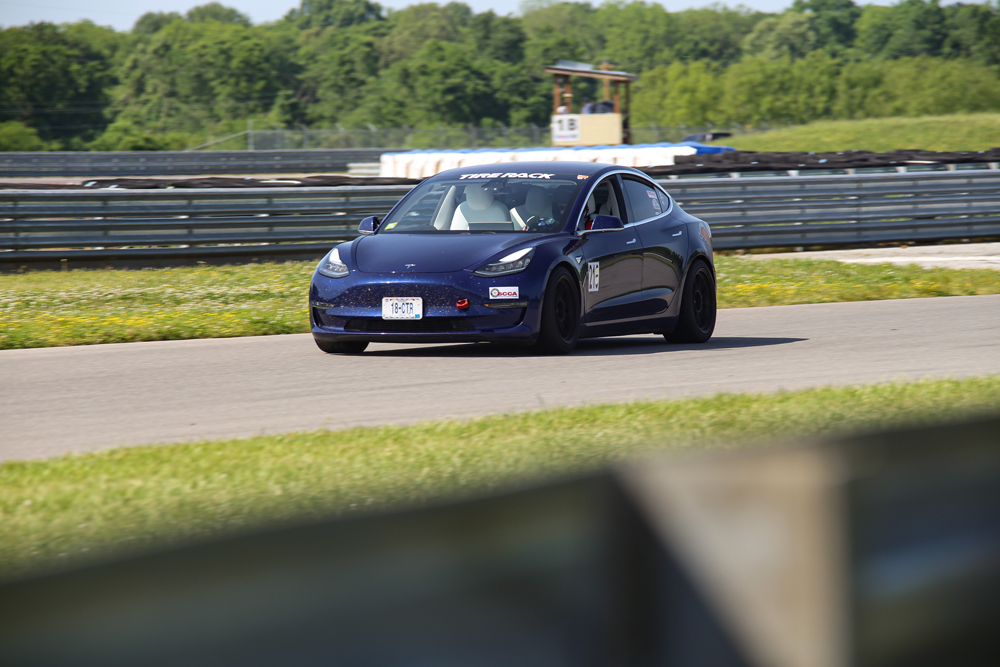
EVs are held to the same safety ruleset as other vehicles in the series, and Dienhart said that GTA organizers have been diligent about booking their events at tracks that maintain an EV-friendly policy. But when it comes to figuring out where and when to charge the cars, that responsibility ultimately falls on the drivers.
“At this point, some of the experienced racers have kind of integrated that into their strategy,” he said. “Like, ‘OK, if I’m running at such and such track, I know I need to drive down to Starbucks and charge up a couple of times throughout the day. With our series, there’s usually 45 minutes to an hour and 15 minutes between a group’s sessions, and each group normally gets four sessions a day. That means there’s a chance you’ll miss a session while you’re charging the car, and you just have to plan for that. So with tracks like Buttonwillow adding Tesla Superchargers, it adds an incentive for those guys to run at those particular facilities.”
National Auto Sport Association
Like the SCCA and Global Time Attack, National Auto Sport Association (NASA), based in Las Vegas, Nevada, has also seen a steady increase in EV entrants. Organizers noted that time trials were becoming a particular area of interest for these racers, but there wasn’t an effective way to integrate these cars into the organization’s existing class structure, so they created one to provide a space for those competitors.
“We started TTEV (Time Trial Electric Vehicle) because there just wasn’t a really good way to bring these cars into our other classes,” said NASA CEO Jeremy Croiset. “But we are working toward that goal. Right now, a big part of the focus is developing the capability and expertise to ensure that our technical compliance procedures can be done to the same level that we’re using with the ICE-powered vehicles. All of these EVs have their own proprietary software solutions, and it’s not easy to plug into those systems to make sure that a participant is operating the vehicle with a declared tune and things like that. So, in the TTEV category, we make it pretty clear that participants can run specific vehicles like the Porsche Taycan, Tesla Model 3, and Tesla Model Y in stock configuration, aside from some allowed minor modifications for things like cooling. Outside of that, it’s pretty much as the car is delivered from the factory.”
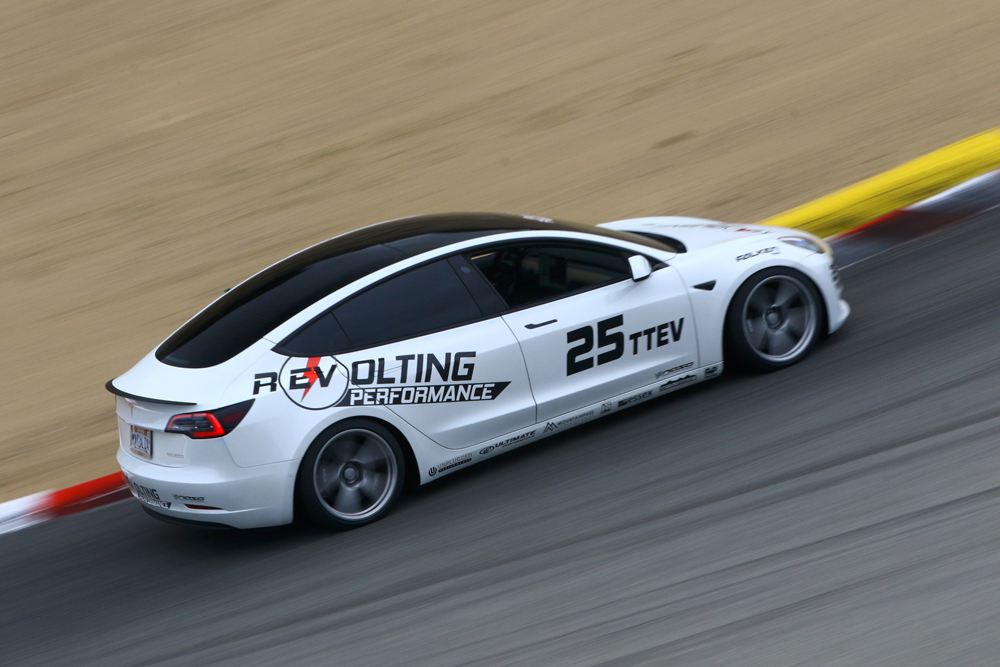
NASA has also been working with EV manufacturer Scalar, which is currently developing a race car that can be entered in wheel-to-wheel competition. Rather than relegating it to a one-make series, the goal is to run the cars alongside the likes of modified Corvettes and Porsche 911s in the Super Touring 2 class sprint races.
“They’re taking brand new Toyota GR86s, taking out the ICE powertrain, and converting the cars to an EV powerplant,” Croiset explained. “They recently ran their first race under NASA sanctioning at our HyperFest event at Virginia International Raceway. From the standpoint of a sanctioning body, you’re looking to achieve this delicate balance because you don’t want to chase away your current competitors with a car that can overachieve in its class, but you also want to give the newcomer a shot, so they have the ability to grow.”
Importantly, Scalar appears to have taken some of track organizers’ primary concerns into account during the development of its EV powertrain. “They’re kind of leading the way in that regard,” Croiset said. “One thing that’s particularly interesting about the Scalar SCR1 is that it has an integrated fire suppression system that runs through the battery. So if there is a fire or a suspected fire and you activate the system, the agent itself can run into and through the battery. They’ve also developed additional safety elements into the battery design, like thermal barriers between the cells to help mitigate thermal runaway.”
Croiset added that the current challenges that EVs face in motorsports are largely temporary, and it’s simply a matter of time before those are resolved. “I think it is the way of the future, and right now we’re just dealing with a situation where innovation hasn’t kept up with the side of the market that’s driving consumers to buy street cars. As we see more and more EVs running at the race track, I think it will drive more innovation on the motorsports side to develop those solutions.”
50th Anniversary of the SCCA Solo Nationals
Back in the early 1970s, autocross competitors were faced with an array of different rulesets created by various independent entities across the United States. Organizers within the Sports Car Club of America (SCCA) and elsewhere were keen on establishing a unified standard, but the catalyst that gave birth to the SCCA Solo Nationals originated from a rather unlikely source.
“I think the idea to do a national event came from Schlitz Beer, actually,” Heyward Wagner said. “It was originally kind of a promotional thing, and the SCCA saw an opportunity to use that as a bit of a lever to start kind of unifying the sport and get to one ruleset.”
Over the past five decades, the Solo Nationals has been through several distinct eras that have helped to shape the event into what it is today. “I remember [SCCA historian and hall of famer] Rocky Entriken telling me that at the first Nationals, it was basically like a normal, regional SCCA autocross event,” he explained. “Nobody knew what to do yet, or how to build a car for it, so they basically just brought the car they had and just figured it out as they went along.”
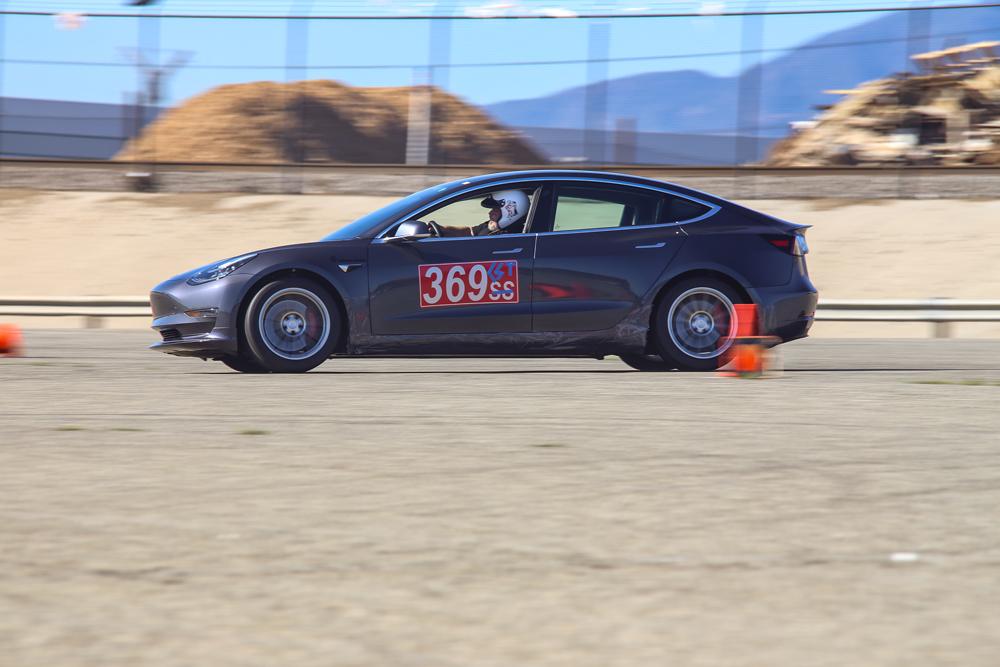
After the event moved to Salina, Kansas, in 1983, the Solo Nationals entered a new, more competitive phase. “I think they had about 400 cars showing up at that point,” said Wagner. “That quickly grew to about 600 or 700 as interest increased, and that’s when we started to see the commercial impact on the sport.”
Suddenly tire manufacturers were directly involved, the OEs were taking notice, and support was coming in from suspension companies. “We think of that as kind of the ‘tire war’ era,” he said. “At that point there were several tire companies contracting drivers, trying to get class wins. There were a lot of bragging rights tied up in that.”
The Solo Nationals later moved to Topeka, Kansas, which paved the way for what Wagner considers to be the event’s modern era. “Now it’s more about the overall experience. It has kind of matured into this tailgate party, autocross family reunion kind of thing that’s fun and inclusive.”
More than 1,200 drivers are expected to compete at this year’s 50th anniversary event, which will take place September 4–8, at Lincoln Airpark in Lincoln, Nebraska, and the SCCA plans to celebrate the occasion in grand fashion. “There will be a welcome party on Monday night where we’ll honor our hall-of-fame members and other folks who have won major awards over the years. On Tuesday we’re going to have a gala that will include speakers from different eras of the event, and we’ll also be visiting the SCCA Solo Nationals installment at the Museum of American Speed there in Lincoln. It’s really the centerpiece of the event this year.” —Bradley Iger
Sources
Global Time Attack
globaltimeattack.com
NASA
drivenasa.com
SCCA
scca.com
 MEMBERSHIP LOGIN
MEMBERSHIP LOGIN JOIN PRI
JOIN PRI


